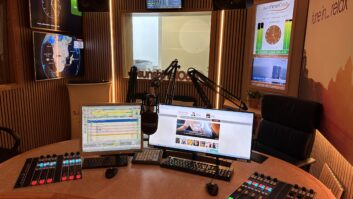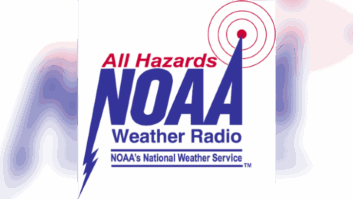Here’s the next in our new series of columns called What’sNext, Radio World’s watch on everything new in audio content distribution. In this edition, we take to the cloud, specifically some of the cloud-based services that radio broadcasters are starting to use.

Here is a screenshot of the WTMJ620 Preps Live app.SPORTS REMOTES
MADE UBER EASY
Milwaukee’s WTMJ(AM) has found an extremely simple way to broadcast and package live high school football on location: They feed their on-location play-by-plays through their account at radionomy.com.
A cloud-based Internet radio support service, Radionomy provides music licensing for any songs played from the company’s database, insertion of WTMJ-supplied ads and the ability to mix live and prerecorded content on the fly.
WTMJ sends two announcers to the games with two microphones, a laptop computer and audio mixer to the game; Radionomy does the rest. The “Preps Live” play-by-plays are distributed on Radionomy’s own website, WISports.com and via the free Radio League Mobile App (available at RadioLeague.com; Android/Apple/Blackberry).
“As Wisconsin’s radio station, WTMJ has a great tradition of sports broadcasting, starting with the Green Bay Packers in 1929,” said Tom Langmyer, VP/GM of Journal Broadcast Group’s Milwaukee Radio Operations. “In 2014, we continue to grow in our commitment to play-by-play with the addition of key high school match-ups.”
CALL INTO THE CLOUD
Call-in shows normally require a serious investment by broadcasters in control room equipment and telephone lines. The cloud-based Call In Studio solution (www.callinstudio.com) eliminates those costs, by providing virtual call-in platform designed for Internet and radio show producers. It allows anyone to virtually accept and manage calls using Web-based interface.
Before the show starts, the station calls into the Call In Studio system over a regular phone line, over which the show’s audio is fed to callers. At the same time, the caller audio is fed back to the station over this same line. The Call-In product automatically answers up to new 35 callers and puts them on hold with show audio until it is their turn to talk — and yes, it supports call screening.
The cost: All calls made into or out of Call In Studio are $0.03 a minute (toll-free incoming calls are $0.06/minute). Phone numbers on the Call In Studio system are $6 a month; toll-free phone numbers are $12 a month.
BBC GOES TO THE CLOUD
In a bid to save money, Britain’s BBC has moved local U.K. station BBC Radio Northampton onto a cloud-based production/playout system. Under the Beeb’s Virtual Local Radio (ViLor) project, this station will process, mix, store and stream audio files from a remote privately owned cloud database. The BBC intends to add three more stations to this same cloud in the next nine months, with all 39 BBC local stations eventually making this move if the process pans out.
Centralizing the BBC’s local radios stations onto a centralized cloud-based platform will reduce local infrastructure, equipment and space expenses; and make station technical refreshes occur more quickly, while improving overall sound and production quality. The new system was developed by BBC Technology and BBC Local Radio.
“This is an excellent example of BBC innovation helping us find new, lower cost and more flexible ways of providing the technology our program makers need to deliver great local radio to our audiences from the local community,” said Peter Coles, the BBC’s interim CTO. “Northampton is a first, but significant, step toward us proving the potential for a fully virtualized BBC Local Radio network.”
CLOUD-BASED RADIO BROADCAST
PLATFORM SEEKS FUNDING
Want to help fund the potential future of radio? Then consider throwing in a few dollars to help Studios.FM’s Virtual Automated Broadcasting Solution to market. According to Studios.FM, VABS is a browser-centered, cloud-based production package that makes it easy for non-techies to broadcast individual radio shows, or entire stations. For professional radio broadcasters, VABS could be a useful option for doing remote broadcasts with a minimum of equipment, hassle, and expenses.
“We will provide all investors with a detailed plan, updates on development and detail where all monies are spent,” according to the VABS IndieGoGo fund-raising website (https://www.indiegogo.com/projects/the-future-of-radio-with-studios-fm). It was planning to launch in February.
Send ideas for What’sNext to[email protected]with “What’sNext” in the subject line.







